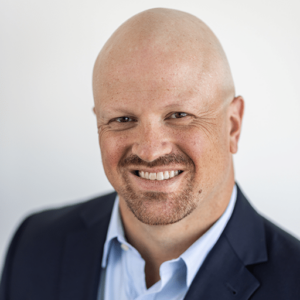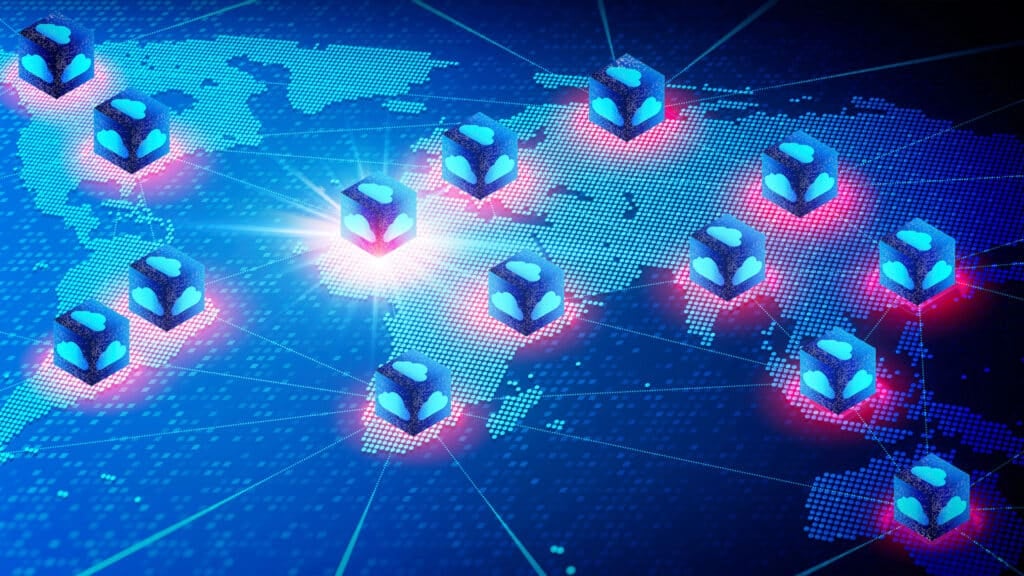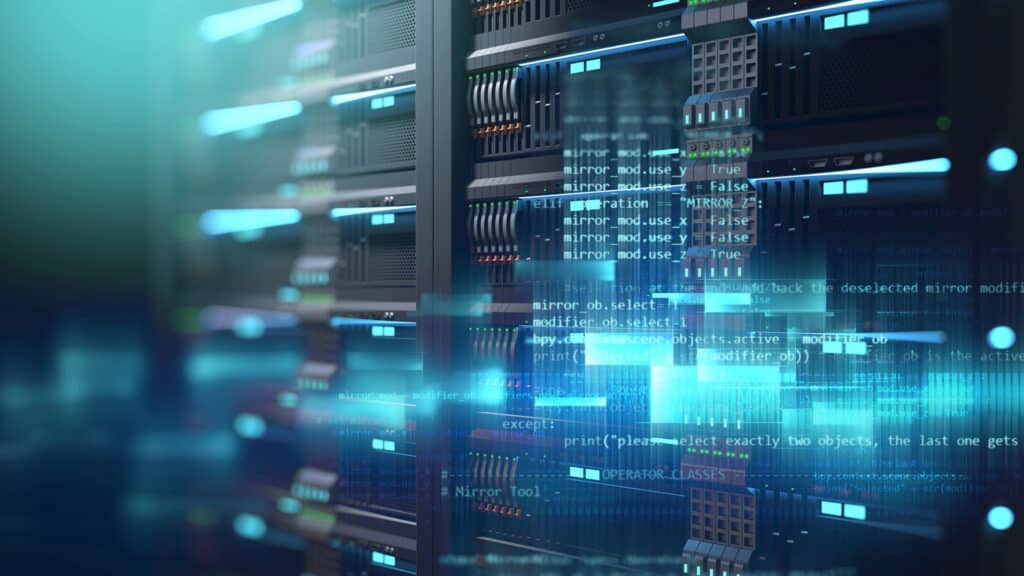On this episode of the Six Five On The Road, hosts Daniel Newman and Patrick Moorhead are joined by Pure Storage‘s CEO, Charles Giancarlo, for a conversation on the future of storage solutions and AI innovations at Pure//Accelerate 2024.
Their discussion covers:
- Charles Giancarlo’s insights on the evolving landscape of data storage and management
- New technologies and solutions unveiled at Pure//Accelerate 2024
- The role of AI and machine learning in advancing storage solutions
- Strategies for ensuring data security and privacy in storage solutions
- Pure Storage’s vision for the future of digital infrastructure
Learn more at Pure Storage.
Watch the video below, and be sure to subscribe to our YouTube channel, so you never miss an episode.
Or listen to the audio here:
Disclaimer: The Six Five Webcast is for information and entertainment purposes only. Over the course of this webcast, we may talk about companies that are publicly traded and we may even reference that fact and their equity share price, but please do not take anything that we say as a recommendation about what you should do with your investment dollars. We are not investment advisors and we ask that you do not treat us as such.
Transcript
Patrick Moorhead: The Six Five is on the road at Pure//Accelerate 2024 here in Las Vegas, Nevada. Daniel, it’s been an exciting year. And maybe we’ll talk about the summit because the year 2024 is all about enterprises, getting that value out of AI, and the continued build-out of infrastructure and infrastructure platforms, and infrastructure is cool again.
Daniel Newman: Absolutely. At our Six Five summit, it was AI unleashed, and the trend continues here, Pat. We are here at Pure//Accelerate in your second home. I’m proud to say that my second home is overseas, but all the same. But no matter where we are, whether we’re in Taiwan, whether we’ve been in Europe, whether we’ve been here in the US, AI is at the center. But I love what you said. It’s not just about AI for AI, it’s about extracting business value, and that is what I’ve been hearing so far here at Pure//Accelerate.
Patrick Moorhead: Yeah, so it’s Pure’s signature event, and it’s my pleasure to introduce Charlie, who runs the show here at Pure, and he has been a Six Five guest many times. Charlie, welcome back.
Charles Giancarlo: Thank you, Pat. It’s always a pleasure to speak to you and to Daniel. Thanks for having me.
Patrick Moorhead: It’s been an exciting couple months. You had some knockout earnings. Here we are at the big event. Congratulations. And your technology just happens to be aligning with AI. It’s fun.
Charles Giancarlo: Well, yeah. Every dog has their day, right?
Patrick Moorhead: Not by accident.
Charles Giancarlo: Yeah, not by accident. That’s exactly right.
Daniel Newman: Absolutely. Congratulations on all the success, Charlie. It’s always fun. We did talk to you recently at the new headquarters. Good to have a chance to sit down and go a little deeper with you at your signature event. I mean, look, let’s just start with the overview and announcements. The socials were flooded, saw a lot of people that I respect putting some really positive feedback and commentary out there. AI is red-hot. What are the big announcements that we’re focused on?
Charles Giancarlo: So, there are several big announcements. One that we’re very proud of is what we’re calling Pure Fusion. This is the first effort by any company at any time to make storage operate for enterprises like a cloud of storage, rather than as individual arrays. And in the consumer world, we now all use some type of cloud storage, right? We generally don’t use external disk drives on our systems. And in the cloud, data storage has always been virtualized. But in the enterprise, it’s individual arrays on individual application environments. And what we’ve done now is make all of our arrays, we’ve networked them, they appear as a single cloud of storage in an enterprise environment that opens up a lot of different capabilities.
One is it makes it much easier to manage. Two is it’s much more economical. Three, it allows them to offer their developers cloud-like storage services. So, the developers only are able to get access to storage via API. So it makes it all API-based. And it does one other thing. It makes all of the data in an enterprise stored on pure arrays accessible to AI and analytics workloads, rather than having to replicate the data into specialized environments.
Patrick Moorhead: So, simplicity, efficiency, and accessibility to AI, super important stuff. And it’s funny, we were kind of joking about accidentally being optimized for AI. It’s anything but that.
Charles Giancarlo: That’s right.
Patrick Moorhead: And in fact, I feel like Pure has been ahead of the duck in many industry transitions, whether it was first all-flash, your design as it related to leveraging software so much, even a hardware ecosystem that allowed you to plug things in and out so you could have your base system and upgrade without actually upgrading.
Charles Giancarlo: Without taking the applications down. So, non-disruptive upgrades, hot swappable.
Patrick Moorhead: Exactly.
Daniel Newman: Hot swap. Yes.
Patrick Moorhead: Exactly. So, none of this is an accident. But let’s talk a little bit about your investments in AI to get this going, not only on the development side, but even go-to market is important too.
Charles Giancarlo: Yes. I actually break now AI down into five different categories. AI is not one thing, and you always have trouble speaking about AI if it’s five different things, right?
Patrick Moorhead: Sure.
Charles Giancarlo: There’s AI for massive GPU clouds, and that’s all about performance and specsmanship. There’s AI for normal enterprise environments, for inference and rag, and making that data both accessible but also economical, right? Then there is AI for what I had mentioned before, which is making all of your data in the enterprise where it sits today accessible for AI analysis, right? Then, there’s how are we using AI just to improve our business, to increase the productivity of our engineers, of our marketing people, of our salespeople. And then, there’s what do we use to put AI in our products to make our products easier to use, more effective for our customers.
Those are five different AI environments. And so, let’s talk about some of those. As you identified, we announced a bunch of AI capabilities in our products to make them easier to use for our customers. So, now, customers will be able to use their natural language, a natural query to ask what would be very complicated questions, not just about how a storage array is working, but how their entire storage environment is working relative to security. Is the environment secure? Is the data secure? Have they turned on all of the right capabilities to make sure they’re taking advantage of our security capabilities?
They can ask about workloads. “Oh, I’m starting to see a slowdown. What’s causing it? What can I do to fix the slowdown that seems to be coming in my environment?” I’m expecting, for example, a big surge at the end of the year, Black Friday and Christmas in workloads. Am I prepared for that? What do I need to do to be fully prepared for that surge when it comes along? And they can do this in natural language, and the system will respond to them and tell them exactly what they need to do in order to be prepared.
Daniel Newman: Yeah, there’s a tremendous amount of opportunity, Charlie, and it is a little bit of a wave of customer zero, as I like to say. The wave is every company is sort of how we implementing AI for ourselves. And you’re a very customer-forward company.
Charles Giancarlo: Correct. Right.
Daniel Newman: You’ve always been very net promoter-centric, had, I believe, the highest score in the industry-
Charles Giancarlo: The highest in the tech industry, yes.
Daniel Newman: … for a long time. And something that I’ve constantly touted, that part of your low attrition, high-net-revenue expansion has always had to do with having really happy customers. AI, things like Copilots, which you’ve announced, give more functionality, flexibility and usability, which really fits your ethos, which I think is super important. Another thing that I think is really important though, too, is what you’re doing from the data platform standpoint. Because in the end, AI, making it usable, valuable comes down to the data being accessible to the applications, to the compute, and of course, having a platform that’s extensible to the data that our entire environments have. Otherwise, you only get part value.
Charles Giancarlo: That’s right.
Daniel Newman: Talk a little bit about how you’re thinking about data platform today and how you see that evolve.
Charles Giancarlo: Today, customers talk about their data. But frankly, what they have now are probably hundreds of data sets, ungoverned, by the way. They’ll replicate a data set for development or for backup and the development will replicate it. It’ll be replicated again. And you ask a customer, “Well, how do you keep track of all these copies?” And you get a blank stare? They are not able to keep track of this, right? So, simply having all of your replications occur by policy, and then be cataloged, and tracked helps with security because now you know where all your data is. If it’s done by policy, you’re not putting copies where you don’t want them or in the hands of the people that you don’t want them, right? So, already, it starts helping by itself with security. And then, if you don’t have extra copies, you’re not paying for extra storage for those extra copies. And so, again, it saves money. It also saves money by load balancing your data sets across all of your available arrays, rather than having it be dedicated to just one environment, right?
Daniel Newman: Right.
Charles Giancarlo: So, again, I don’t think you have to convince anyone that operating anything as a shared resource or as a cloud of consistent environments is more effective, more cost-effective, more secure than operating individual unique islands of, in this case, storage.
Patrick Moorhead: Yeah, it’s interesting. Different strokes for different folks. You talked about, I think, five different AI ways and investments you’re doing AI. And there’s a lot of diversity when it comes to data centers and the use cases that they’re leveraging your technologies. I have to ask, you said something very provocative in your Q1 earnings that I want to drill down on.
Charles Giancarlo: Sure.
Patrick Moorhead: You’ve talked about large social media companies and things like that, but you talked about hyperscaler opportunities, and I don’t normally associate Pure with the hyperscalers. What are you doing there? What can you talk about?
Daniel Newman: Well, what he’s saying is he wants names-
Charles Giancarlo: Yeah, I know that.
Daniel Newman: … what was the contract size.
Charles Giancarlo: I know that.
Patrick Moorhead: You can spill everything if you’d like for The Six Five audience.
Charles Giancarlo: Well thought. Right. Just for you, guys.
Patrick Moorhead: Exactly.
Charles Giancarlo: For companies that want conversations to stay confidential, in order to keep it confidential, we limit our discussion in this area to what we call the top 10 hyperscalers. And we’re talking to a significant number of them. And like in any new environment, we have a lead horse, let’s call it a lead horse. And I am still knocking on wood. I’m hoping that’s wood below me, that we will get our first design win at a hyperscaler this year. All right. So what does that mean? What it means is that, let’s call it their standard storage environment, which as you know, in hyperscalers, is hard disk, that we will get our first design win for replacing that with our Pure technology. What is our Pure technology? It’s our DirectFlash technology, the combination of software and hardware that allows us to get the best possible price performance out of Flash, and now actually be able to compete from a price performance level with hard disk.
Patrick Moorhead: Yeah, Charlie, I mean, given the R&D budgets of the hyperscalers, and even their investments that they’re making directly with the Flash companies, Flash controller companies, I think that’s a huge statement. And basically says that what you are building is differentiated, and quite frankly doesn’t make economic sense for them to try to go off and do themselves.
Charles Giancarlo: That’s correct.
Patrick Moorhead: I mean, these are companies that do their own semiconductors, right?
Daniel Newman: Yeah. But if you’re one of the bean counters out there with your little spreadsheet, you do got to kind of play with what he’s saying.
Patrick Moorhead: Sure.
Daniel Newman: Because when you’re selling to enterprises, the size, these data centers are substantial. But when you’re talking about these hyperscalers-
Charles Giancarlo: No, many times, the size.
Daniel Newman: … if you look at the NVIDIA Lyft, and obviously big sponsor here at Accelerate, but I’m saying everybody knows concentration.
Charles Giancarlo: Yes. Correct.
Daniel Newman: So, you guys kind of have a really great situation, where if you can land inside of a few of these big up into the right.
Charles Giancarlo: Correct.
Daniel Newman: Having said that, you’re still very diversified because you’ve already built yourself on a core of enterprise. So, it’d be a huge change for the trajectory.
Charles Giancarlo: That’s exactly right. And one of the advantages we have is we’ve been developing this technology, and remember it’s not the hardware anyone could replicate.
Patrick Moorhead: You showed software, software, software.
Charles Giancarlo: It’s all software. The hardware is easily replicable, right? But the software we’ve been developing for 10 years, and we have economies of scale because it’s the same technology that we use for the enterprise. Now, they may not decide to use all of our software. They need the core part that fits inside their storage environment. But we are now at the point, as we’ve indicated for many quarters, where Flash technology now at a system level can compete with hard drives on a price per bit-
Patrick Moorhead: Yeah, you showed that SLC, MLC.
Charles Giancarlo: … at one-tenth of the space, power and cooling. And now power’s at a premium.
Patrick Moorhead: Exactly. Exactly.
Daniel Newman: So, we only have a minute or two left, Charlie. I really appreciate you carving out time. We know how much demand there is at events.
Patrick Moorhead: I mean, he only has 12 more meetings after this, I think.
Charles Giancarlo: The best meeting, by far. Thank you.
Daniel Newman: No, thank you.
Patrick Moorhead: Oh, hang on a second. Here we go.
Charles Giancarlo: I said that on camera. You’re not going to show this today, right?
Daniel Newman: No, absolutely. No. No, of course not. But the one thing I did want to kind get to is, Charlie, we talked a lot about AI. I read through all the announcements, listened to the keynote. You’re doing things in cyber resiliency, you’re doing things in platform, you’re doing things to improve your SLA. You’ve got all your AI announcements. You’ve had a lot of customer meetings, I think I’ve heard dozens already in just a few hours. How are they responding to this? And beyond AI, are those announcements catching some really positive attention?
Charles Giancarlo: They really are. Well, first of all, cyber is just such a huge issue today. Sadly, it’s a huge issue today. So, everything we can do to make our customers’ data, give them the ability to recover from an incident as quickly as possible of great, great interest, right? I would say, Fusion, now that it’s going to be delivered this year as an upgrade, has captivated the audience, and they’re really starting to think about data. This challenges all the assumptions that people make about enterprise storage. And so, it’s really driving a lot of creativity, I think, by our customers overall. So that’s been big. And frankly, we haven’t spoken about it, but this movement, increasing movement to as a service, where what we’re delivering is a true SaaS service for storage, where the customer can choose where the data’s located, but not have to manage it at all. We do all of that. It’s growing like crazy and of course continuing to be of great interest to our customers.
Patrick Moorhead: Right.
Daniel Newman: Well, it’s outstanding. I love the fact, by the way, the backdrop behind Charlie there. It’s got that orange color. You’ve got people walking around in orange suits. You’ve got this amazing-
Patrick Moorhead: Six Five logo has orange in it too.
Daniel Newman: Yeah, yeah, yeah, the logo, the Pure//Accelerate.
Charles Giancarlo: Orange is the new green, right?
Daniel Newman: We’re clearly onto the cool trend.
Charles Giancarlo: Thank you. I appreciate that.
Daniel Newman: Charlie Giancarlo, thank you so much for joining us here on The Six Five. We would love to have you back again soon. I expect that we will.
Charles Giancarlo: Sure. Thank you, Daniel. Thank you, Pat.
Patrick Moorhead: Thank you.
Charles Giancarlo: Always appreciate it.
Daniel Newman: And here we are at Pure//Accelerate 2024 in Las Vegas. That was Charlie Giancarlo, CEO of Pure Storage, talking to us about not just its AI vision, but its overall strategy and how it’s winning in this opportune moment in the market. Pat, we got more coverage coming here at Pure//Accelerate 2024. Stay with us, subscribe, be part of our community. But for now, we got to say goodbye. See you all soon.
Author Information
Daniel is the CEO of The Futurum Group. Living his life at the intersection of people and technology, Daniel works with the world’s largest technology brands exploring Digital Transformation and how it is influencing the enterprise.
From the leading edge of AI to global technology policy, Daniel makes the connections between business, people and tech that are required for companies to benefit most from their technology investments. Daniel is a top 5 globally ranked industry analyst and his ideas are regularly cited or shared in television appearances by CNBC, Bloomberg, Wall Street Journal and hundreds of other sites around the world.
A 7x Best-Selling Author including his most recent book “Human/Machine.” Daniel is also a Forbes and MarketWatch (Dow Jones) contributor.
An MBA and Former Graduate Adjunct Faculty, Daniel is an Austin Texas transplant after 40 years in Chicago. His speaking takes him around the world each year as he shares his vision of the role technology will play in our future.









